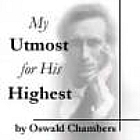 Yesterday Joseph and I walked around the Sea of Galilee. It's a long ways. More about that later.
Yesterday Joseph and I walked around the Sea of Galilee. It's a long ways. More about that later.We have one more week in Israel. Today (Friday) we''ll be driving South to En Gedi, Masada, and the Dead Sea. Internet access will probably be sketchy, but I'll do what I can. Shalom and God Bless.



























































